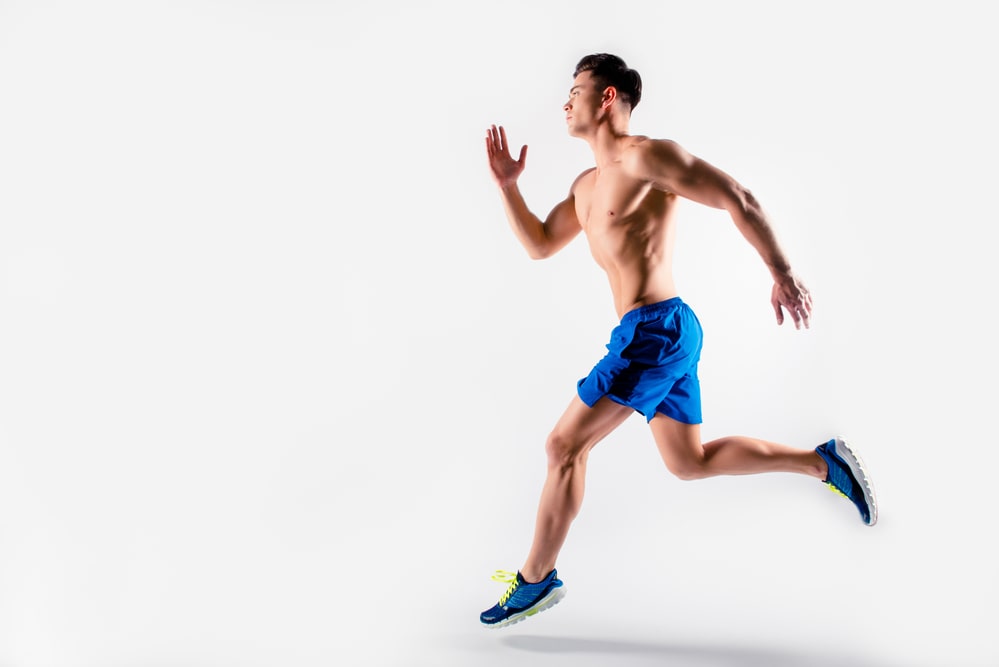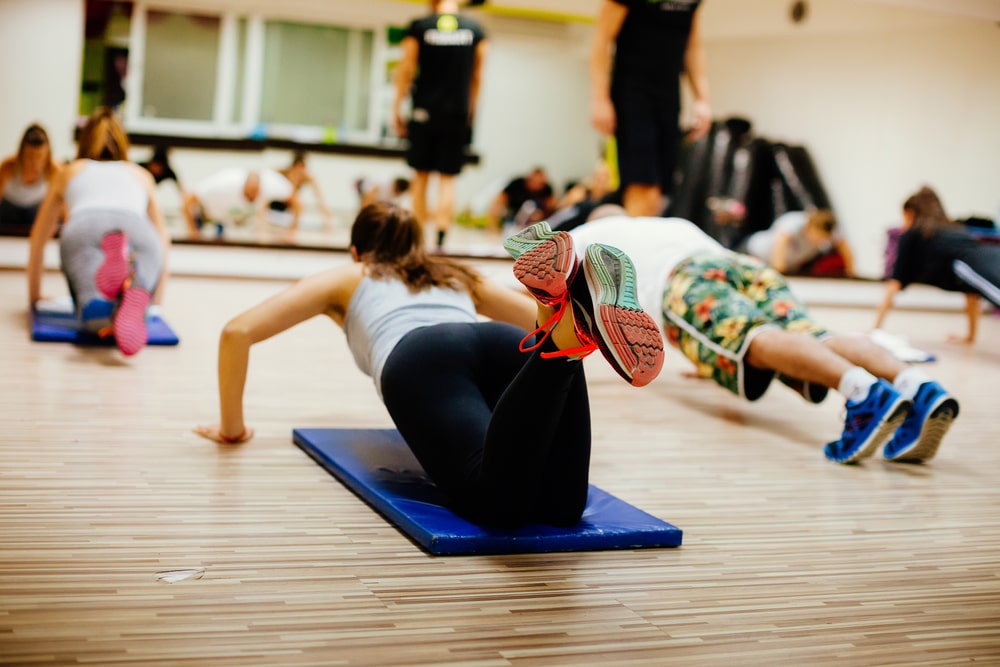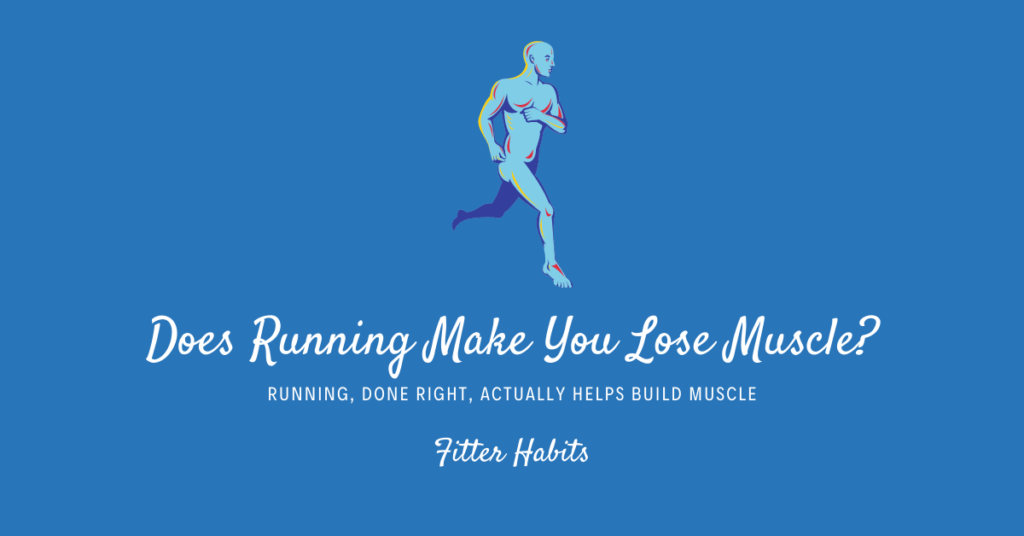Running is an aerobic sensation with many health benefits you don’t want to miss, but does running make you lose muscle?
Running is a popular workout for many people and comes with multiple health benefits. But if you also frequent the gym to pump iron, you’re probably concerned about undoing all of those hard-earned reps when you go for your morning jog.
Running, combined with a healthy diet, can help you lose weight, but it can also help you gain muscle mass. We’ll explain everything you need to know to help make running a productive part of your weight lifting regimen.
Contents
Combination is Key

To build muscle and improve your aerobic health, it’s important to understand the need to balance cardio and strength training. If you’re looking to improve or maintain your muscle mass, keep high amounts of protein in your diet.
Diet holds just as much weight as physical activity when your goal is muscle growth. Resist the urge to over-train and keep your house full of healthy, amino acid-rich foods to help you refuel your glycogen stores and charge up.
How Much Exercise Do I Need?
According to the Physical Guidelines for Americans, you should aim for a minimum of 150 minutes of moderate exercise like walking briskly, mowing your lawn, riding a bicycle, or 75 minutes of intense exercise like hiking, running, or playing soccer each week.
You can do the same exercise, say a 30-minute walk around the neighborhood, five days a week, or you can do a mix of activities. If you’re currently an avid runner or want running to be your main aerobic exercise source, you may need less than 75 minutes if you run fast or cover long distances.
To maximize the benefits of your chosen workout routine, make sure you enjoy a diet that combines fats, proteins, and carbohydrates (or carbs). Also, be sure to eat lots of fruits and vegetables to give your body the necessary nutrients for building muscle.
You might also be interested in our explainer on does running make your butt smaller.
Running Can Increase Muscle Mass

Some people believe that cardio burns muscles. While this can be true (particularly if you run too much or too intensely without eating enough calories to compensate and don’t include a strength training routine a few days a week), running can also build mass.
The key to building your muscles is high intensity. For example, sprinting is a great way to increase muscle gains. Another great choice is high-intensity interval training, better known as HIIT.
To begin we recommend working with a personal trainer to develop a routine that focuses on multiple muscle groups (both upper body and lower body). The plan should also work for your weight loss or fitness goals.
According to an article in the US National Library of Medicine National Institutes of Health, you need a combination of frequency (four-five days a week), length (30-45 minutes), and intensity (approximately 70-80% of your maximum heart rate). This combination produces muscle contractions that are conducive to muscle growth.
When Can Cardio Burn Muscle?
While studies done by scientists have proven that some types of running can help increase muscle mass, other types of running can burn it. Just picture an Olympic distance runner who’s slender and has little fat or muscle. This is because long-distance running breaks down your muscles instead of building them.
If marathon running is your dream, be prepared for what this sport can do to your muscles. While it may help you decrease your body weight or burn fat, it will also lower your muscle mass. You can take steps to help prevent this, like incorporating a resistance training routine a few days a week.
It’s essential to maintain your muscles, as they help protect your bones and decrease your chance of injury. Keep a close eye on your protein intake, as well, to help encourage muscle growth as you train.
The Importance of Running
Running has a plethora of wonderful health benefits. In a review published in Sport Medicine, researchers discovered that running decreases body fat, promotes good cholesterol, increases muscle mass, and enhances your aerobic capacity.
If being stuck on a treadmill in a gym isn’t your thing, find a running buddy to hit the trails with, or join a running group in your community. You can also try training for an Iron Man race, a combination of bicycling, swimming, and running.
Running Can Fight the Effects of Aging
While some types and intensities of running can cause muscle loss, your body will begin to lose muscle tissue naturally as you age. When you turn thirty, something known as sarcopenia can occur, which leads to a steady decrease in muscle tissue. You can combat some of this by continuing (or starting) to follow a weight training routine or involving HIIT in your runs.
Running is also excellent for maintaining neural connections that help you with day to day activities as you age and preserving your lean muscle mass.
How Do I Start Running?

Before starting any new workout routine, check with your doctor to make sure you’re healthy enough to begin. If you don’t feel comfortable developing a plan on your own or following one you find online, we recommend finding a trainer who can help get you started and guide you on your path to fitness.
If you’re currently sedentary, start with a brisk 30-minute walk. Once you can walk most days without feeling winded, start incorporating some walk-run intervals. Slowly increase the amount of time you run as you get more fit.
Does Running Make You Lose Muscle? The Final Word
While some types and intensities of running can lead to muscle loss, the benefits far outweigh the risks. Utilize interval training and shorter runs to complement your strength training routine and enjoy building even more muscle mass. There’s no reason to wait. Get out there and start running to improve your overall wellness and jumpstart fat loss.



